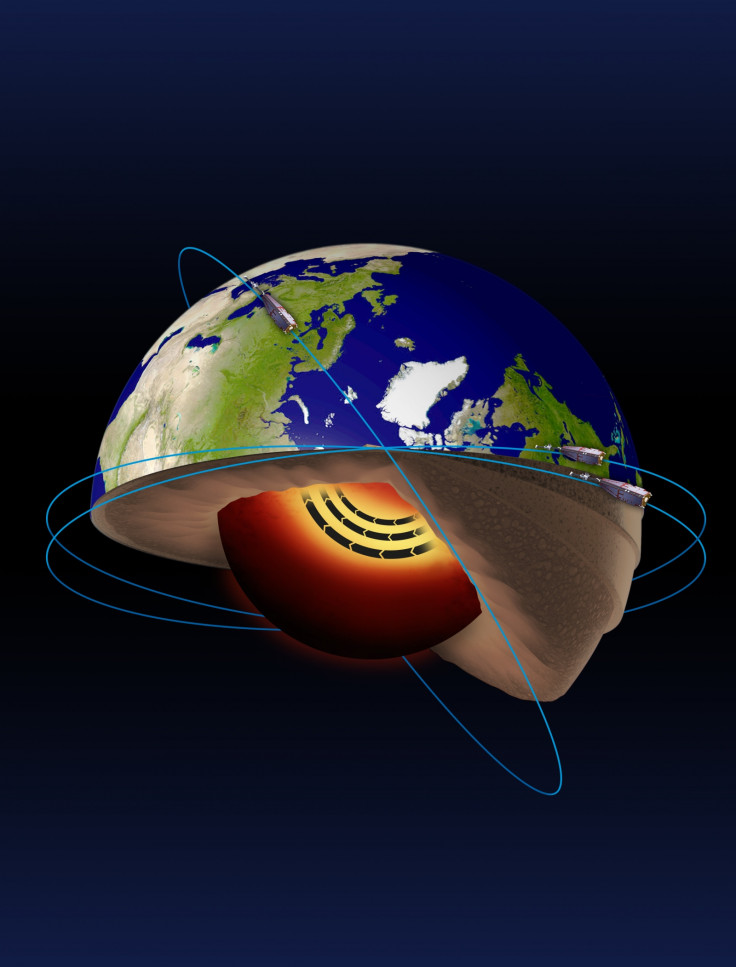A jet stream has just been discovered in Earth's core
'X-ray' of planet explains why iron in outer core moves faster under Alaska and Siberia.
A jet stream has been discovered in the Earth's core, with a band of molten iron moving at an accelerating pace in the northern hemisphere. This is the first time the jet has been seen clearly, and provides a new view of our planet that will help us better understand its inner-workings.
Earth's core is largely studied through measurements of the planet's magnetic fields. It has a solid inner core at the centre and a liquid outer core both of which are mostly composed of iron. Previous research has shown the iron in the outer core is moving faster in the northern hemisphere than elsewhere on the planet – the cause of which was not really known.
Scientists led by Phil Livermore from the University of Leeds have now used the European Space Agency (ESA)'s Swarm satellites to create an "X-ray" of the planet. These three satellites simultaneously measure the different magnetic signals coming from the Earth's core, mantel and crust, as well as its oceans, ionosphere and magnetosphere. By doing this, the team was able to get a clear picture of the magnetic field created in the core.
Their findings, published in Nature Geoscience, showed the fast-moving iron beneath Alaska and Siberia is caused by a jet stream moving at a rate of 40km per year – about three times faster than the normal speed of the outer core.
Livermore said: "The European Space Agency's Swarm satellites are providing our sharpest x-ray image yet of the core. We've not only seen this jet stream clearly for the first time, but we understand why it's there. We can explain it as an accelerating band of molten iron circling the North Pole, like the jet stream in the atmosphere."

The jet stream lines up with a boundary between the inner and outer core. Scientists believe the jet is the result of liquid in the core moving towards the boundary from both sides, then being squeezed out sideways. The force required to do this could come from changes to the magnetic field or through buoyancy.
The speed of the jet was found to have increased between 2000 and 2016. This acceleration, they say, "may be part of a longer-term fluctuation of the jet causing both eastward and westward movement of magnetic features over historical periods".
Swarm mission manager Rune Floberghagen said: "Further surprises are likely. The magnetic field is forever changing, and this could even make the jet stream switch direction ... With the unprecedented resolution now possible, it's a very exciting time – we simply don't know what we'll discover next about our planet."
Co-author Dr Chris Finlay, from the Technical University of Denmark said: "We know more about the Sun than the Earth's core. The discovery of this jet is an exciting step in learning more about our planet's inner workings."
© Copyright IBTimes 2025. All rights reserved.






















